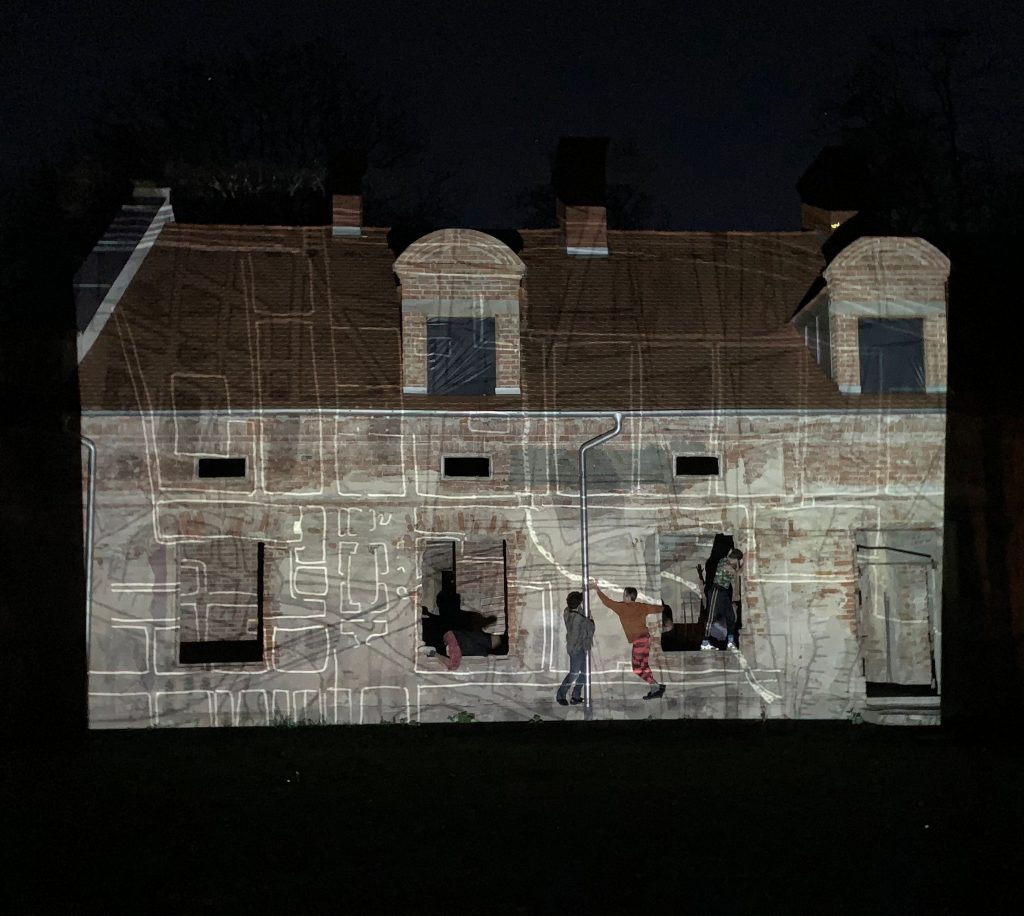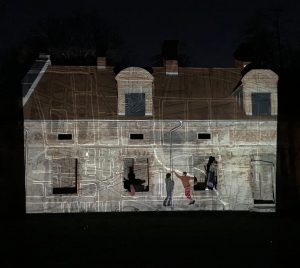The Y’s Norman E. Alexander Center for Jewish Life is proud to present the Who We Are: Values Walking Tour, showcasing local artists representing a different humanitarian value each month.
It is our goal, amidst a COVID-19 reality, to promote local artists and offer the Northern Manhattan community access to art. While normally we would like for this art to be shown on the walls of the Y, with the current COVID-related limitations, it is our goal to bring our local artists to the streets of our community.
April: Remembrance

Still Image from Workshop performance of Site: Yizkor Sichow, Poland

Still Image from the Video Installation Site: Yizkor, Incubated by LABA: A Laboratory for Jewish Culture, the Millay Colony and the MacDowell Colony
By Maya Ciarrocchi
mayaciarrocchi.com | instagram.com/mayaciarrocchi
Maya Ciarrocchi is a New York-based interdisciplinary artist working across media in drawing, printmaking, performance, video, installation, and social practice. Her work has been exhibited nationally and internationally, and she has received residencies and fellowships from the Bronx Museum of the Arts (AIM), LABA: a Laboratory for Jewish Culture, Lower Manhattan Cultural Council (Swing Space), MacDowell, Millay Colony, New York Artists Equity, UCross, and Wave Hill (Winter Workspace). She received a Foundation for Contemporary Arts Emergency Grant, a Film/Video Grant from The Jerome Foundation, and funding from The Puffin Foundation. In addition to her studio practice, Ciarrocchi has created award winning projection design for dance and theater including the TONY award winning Broadway musical The Band’s Visit. Ciarrocchi is the recipient of a 2021 grant from the Trust for Mutual Understanding and a Bronx Council on the Arts 2020 BRIO Award winner.
Curator’s Note By Gal Cohen
galcohenart.com | instagram.com/galshugon
Maya Ciarrocchi’s art practice speaks strongly to the value of Remembrance. Through personal narrative, research-based storytelling, and embodied mapmaking, Ciarrocchi’s works recreate access to the stories of perished communities and demolished places, thus exploring the physical and emotional manifestation of loss. This still image was captured from an in-process interdisciplinary performance work: Site: Yizkor, commemorating the Jewish communities who perished during the Holocaust. Among the source material included, there are architectural renderings of demolished buildings, memory maps of vanished places and figures, and prose remembrances obtained from historical Yizkor books. This month, when Yom HaShoah, Holocaust Remembrance Day is observed, Maya’s work resonates and invites us to dive into the remembrance of these lost communities.
Remembrance
By Rabbi Ari Perten, Norman E. Alexander Center for Jewish Life Director
Renee Descartes famously opined, I think, therefore I am. Without taking too many liberties, we might reconstruct this statement to I remember, therefore I am, for who are we if not individuals built by our experiences. Indeed memory is so prized that we often utilize a multiplicity of tools to help us remember that which we deem important. These tools range from family stories passed down from generation to generation to the appointments booked on a google calendar to a social media reminder of a friend’s birthday. Memory is important and we regularly hold ourselves accountable towards remembering our past and the future events to which we’ve made obligations. Memory can be multi-sensory. The taste of a food, notes of music, and whiffs of scent can transport us to a distant past that suddenly becomes very alive in the moment.
Yet memory can also be false as well. How accurately is the past remembered? Whose truth is represented in this memory? Might there be other truths that distort or even change the event once remembered with such clarity. Such thinking opens up the possibility that the reality of the past might not be so rigid. We craft memories about what is important. Perhaps these memories speak more towards the person we aspire to become more so than the our recollected experiences.


